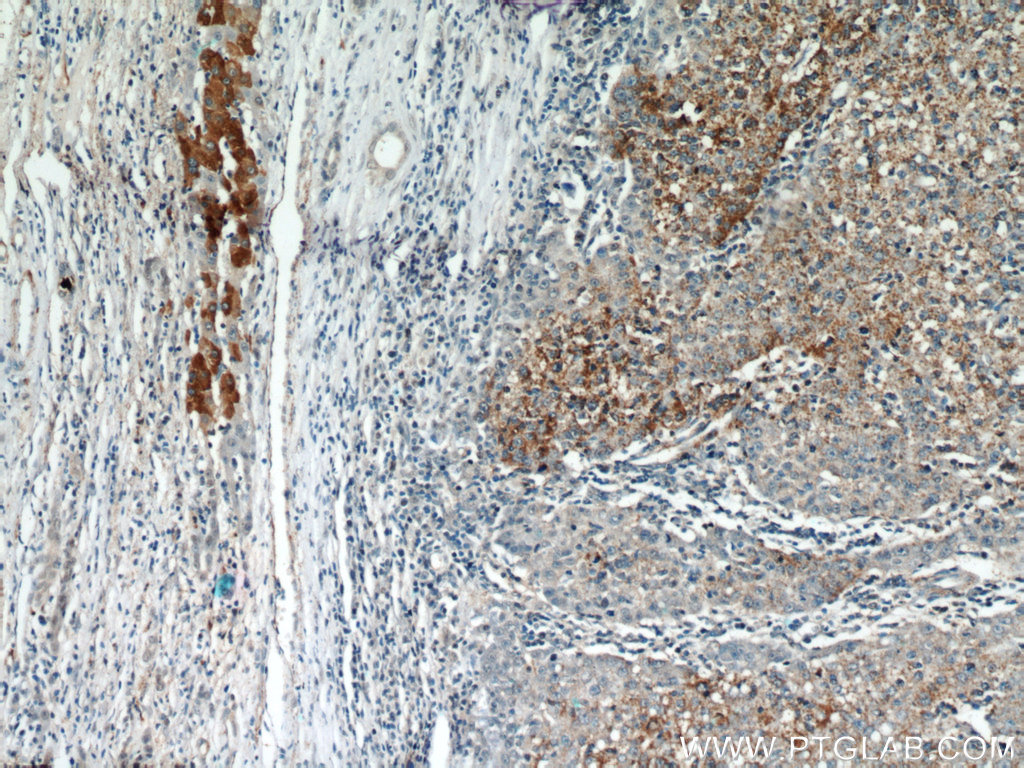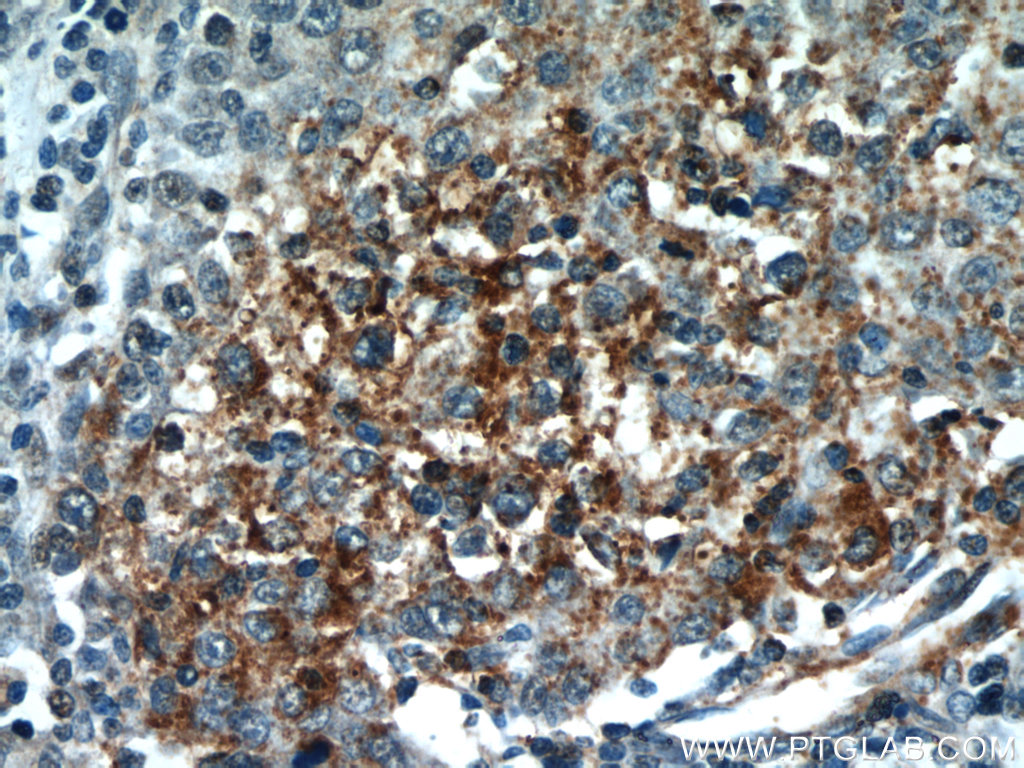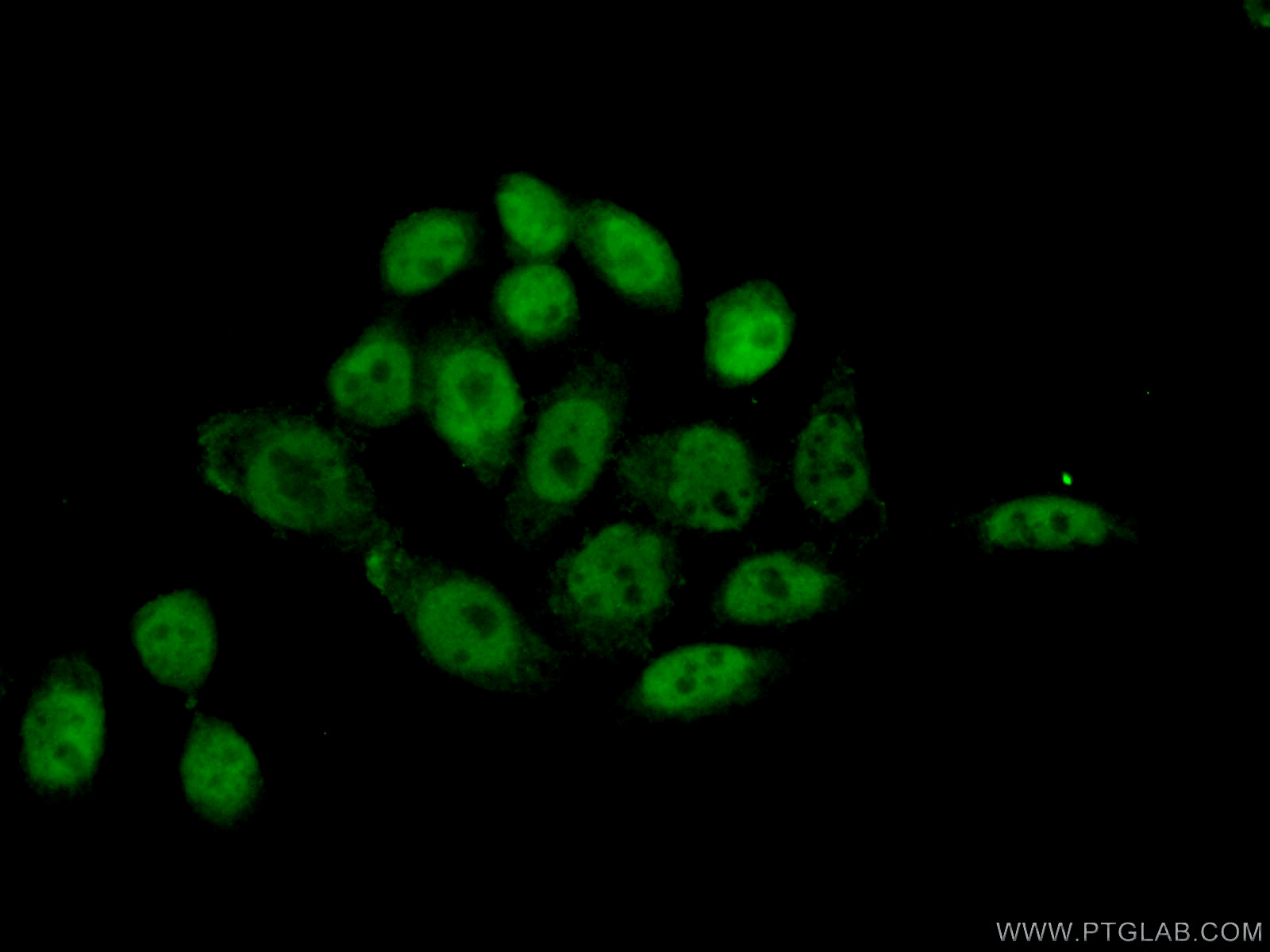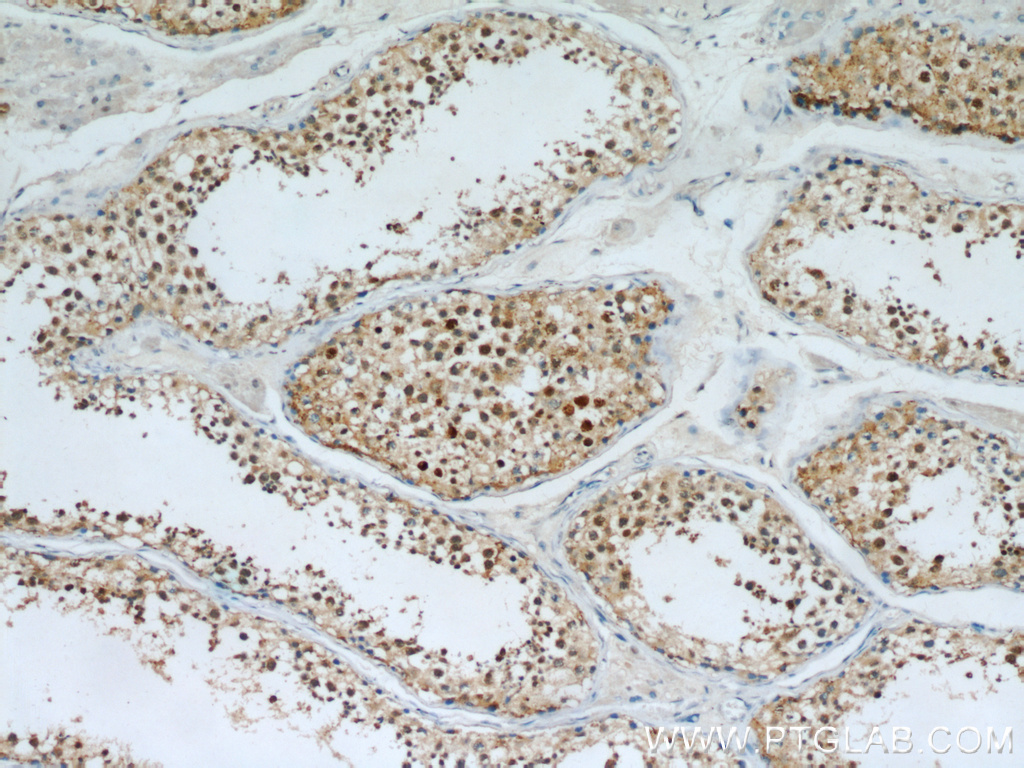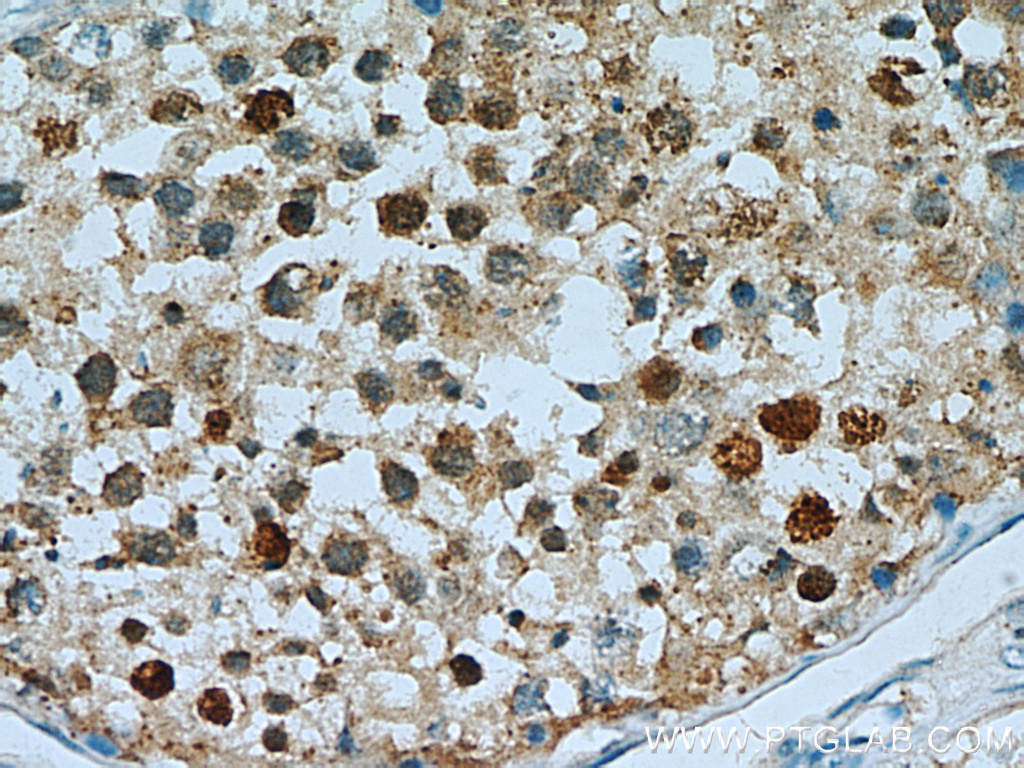PI3 Kinase p110 Beta Polyclonal antibody
PI3 Kinase p110 Beta Polyclonal Antibody for IF/ICC, IHC, ELISA
Host / Isotype
Rabbit / IgG
Reactivity
human and More (1)
Applications
IF/ICC, IHC, ELISA and More (1)
Conjugate
Unconjugated
验证数据展示
经过测试的应用
| Positive IHC detected in | human liver cancer tissue, human testis tissue Note: suggested antigen retrieval with TE buffer pH 9.0; (*) Alternatively, antigen retrieval may be performed with citrate buffer pH 6.0 |
| Positive IF detected in | HeLa cells |
推荐稀释比
| Application | Dilution |
|---|---|
| Immunohistochemistry (IHC) | IHC : 1:20-1:200 |
| Immunofluorescence (IF) | IF : 1:50-1:500 |
| It is recommended that this reagent should be titrated in each testing system to obtain optimal results. | |
| Sample-dependent, Check data in validation data gallery. | |
产品信息
21739-1-AP targets PI3 Kinase p110 Beta in WB, IF, IHC, ELISA applications and shows reactivity with human samples.
| Tested Applications | IF/ICC, IHC, ELISA |
| Cited Applications | WB, IF, IHC |
| Tested Reactivity | human |
| Cited Reactivity | human, mouse |
| Immunogen | PI3 Kinase p110 Beta fusion protein Ag16456 种属同源性预测 |
| Host / Isotype | Rabbit / IgG |
| Class | Polyclonal |
| Type | Antibody |
| Full Name | phosphoinositide-3-kinase, catalytic, beta polypeptide |
| Synonyms | p110 BETA, PI3 Kinase p110 Beta, PI3 kinase subunit beta, PI3K, PI3K beta, PI3K p110(beta), PI3Kbeta, PI3KCB, PIK3C1, PIK3CB, PtdIns 3 kinase subunit beta |
| Calculated Molecular Weight | 1070 aa, 123 kDa |
| Observed Molecular Weight | 110 kDa |
| GenBank Accession Number | BC114432 |
| Gene Symbol | PIK3CB |
| Gene ID (NCBI) | 5291 |
| RRID | AB_10755305 |
| Conjugate | Unconjugated |
| Form | Liquid |
| Purification Method | Antigen affinity purification |
| UNIPROT ID | P42338 |
| Storage Buffer | PBS with 0.02% sodium azide and 50% glycerol pH 7.3. |
| Storage Conditions | Store at -20°C. Stable for one year after shipment. Aliquoting is unnecessary for -20oC storage. |
背景介绍
实验方案
| Product Specific Protocols | |
|---|---|
| IHC protocol for PI3 Kinase p110 Beta antibody 21739-1-AP | Download protocol |
| IF protocol for PI3 Kinase p110 Beta antibody 21739-1-AP | Download protocol |
| Standard Protocols | |
|---|---|
| Click here to view our Standard Protocols |
发表文章
| Species | Application | Title |
|---|---|---|
Cell Mol Gastroenterol Hepatol Mannan-binding lectin via interaction with cell surface calreticulin promotes senescence of activated hepatic stellate cells to limit liver fibrosis progression. | ||
Biochem Pharmacol TANGO1 interacts with NRTN to promote hepatocellular carcinoma progression by regulating the PI3K/AKT/mTOR signaling pathway | ||
J Ethnopharmacol Root extract of Hemsleya amabilis Diels suppresses renal cell carcinoma cell growth through inducing apoptosis and G2/M phase arrest via PI3K/AKT signaling pathway | ||
Cells Determination of WWOX Function in Modulating Cellular Pathways Activated by AP-2α and AP-2γ Transcription Factors in Bladder Cancer. | ||
J Zhejiang Univ Sci B Silencing of DsbA-L gene impairs the PPARγ agonist function of improving insulin resistance in a high-glucose cell model. | ||
Mol Med Rep EGFR‑associated pathways involved in traditional Chinese medicine (TCM)‑1‑induced cell growth inhibition, autophagy and apoptosis in prostate cancer. |
